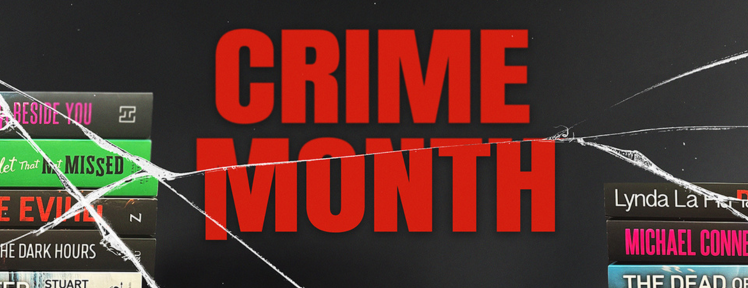British-Australian thriller author L.A. Larkin has been likened to Michael Crichton and Matthew Reilly. The Genesis Flaw was nominated for four crime fiction awards and Thirst described as, ‘The best Antarctic thriller since Ice Station’. An adventurer at heart, Larkin has spent time in the Antarctic, with scientists at the British Antarctic Survey and the Australian Antarctic Division. L. A. Larkin lives in Sydney and London, and teaches mystery and thriller writing. Her latest book is called Prey.
Today, Larkin is on the blog to talk to us about the delicate art of suspense in thriller writing. Read on!
Before the world was turned upside down by the Coronavirus pandemic and we could no longer fly to other countries, I was at ThrillerFest in New York City. One of the big topics for panel discussion was how thriller writers create suspense. Having a suspenseful plot that builds to a satisfying climax is what thrillers are all about, after all. As well as writing crime-thrillers, I also teach thriller writing at the Australian Writers Centre and I always get asked: what is suspense? One of my favourite definitions is Alfred Hitchcock’s – ‘It is when you expect something bad to happen and you are powerless to intervene.’ At ThrillerFest, best-selling author Meg Gardiner defined suspense as ‘a state of mental uncertainty about how something will pan out.’ It’s the uncertainty that keeps readers reading, it’s the puzzle we want to solve. Add to that the rollercoaster of emotions that readers experience: the pleasurable but nail-biting excitement and anticipation regarding an outcome, such as the detective finally catching the serial killer, or the mother, who has lost everything, finding and saving her kidnapped child.
When I was writing Prey, the first question I asked myself was: why should the reader care about Olivia Wolfe, the central character? If the reader doesn’t connect with her then they won’t experience her joy and despair, her terror and moments of hope. Thrillers are very plot-driven, but it is the characters people remember: Jack Reacher, Phryne Fisher, psychiatrist Joe O’Loughlin, detective Jane Tennison. Which is why I spend as much time creating my characters as plotting the story. Wolfe is no ordinary journalist. She travels the world exposing heinous crimes and in so doing makes powerful enemies. She’s flawed and troubled by a past she wants to forget, which creates dramatic tension because the reader suspects her past will catch up with her. But when and how? She makes mistakes – she’s human. She’s in love with the wrong kind of guy. We’ve all been there, right? So, we can relate to her. But she’s brave and risks everything to expose a terrifying criminal syndicate who sends an assassin to kill her.
I like to raise a question and set up a mystery in the first chapter. In the opening chapter of Prey a woman is murdered by a professional killer and her boyfriend is warned to back off or the same will happen to him. This raises the question: why was this ordinary woman murdered? Why it was made to look like a suicide? What information does the boyfriend have that’s worth killing for? In chapter two, we meet Olivia Wolfe and discover that the murder victim had met with Wolfe the day before she died and she knows a small part of a bigger mystery. It’s not until the last few chapters that we discover what the series of murders in four different countries is all about.
Here are some more of my favourite ways of building suspense:
Don’t reveal too much, too fast – the reader wants to fill in the gaps in their knowledge about the plot and characters along the way. Keep something back.
Drip feed vital clues and hints to the reader throughout, but keep the final piece of the puzzle until the very end.
Use plot twists that surprise the character as well as the reader, especially in the middle part of your story.
It’s fun to have the reader sometimes know more than the central character and be powerless to stop the character making a terrible mistake. It’s that ‘Don’t do it!’ moment.
Ticking clocks really ramp up the suspense in a thriller too. Can he stop the faulty plane taking off in one hour? Can they diffuse the bomb in fifteen minutes? Will the serial killer take his next victim at the full moon?
Cliff hangers are great. They leave the reader wondering if all is lost at the end of a chapter, or hint that something bad is about to happen.
Keep your reader unsure who will win at the climax – the hero or the adversary?
This all leads to an adrenaline-pumping climax. As Jeffery Deaver once said, ‘Always keep in mind that people don’t read books to get to the middle; they read books to get to the end’.
—Prey by L.A. Larkin (Clan Destine Press) is out now.
L.A. Larkin will be having a Facebook Live book launch for Prey on Wednesday 22nd April at 6:30pm – you can join in here.

Prey
A journalist who travels the world exposing heinous crimes makes enemies, Olivia Wolfe has more than most.
When her anonymous source is murdered, Wolfe must unravel the terrible secret that connects a British Cabinet Minister, a Vietnamese billionaire, and a poor South African teacher to a series of gruesome murders. Soon Wolfe is hunted by a terrifying assassin. With governments in the balance and the survival of one of the most magnificent creatures on earth in her hands, can Wolfe stay alive long enough to expose this shocking conspiracy?...







 Booktopia’s top thrilling fiction picks for Crime Month
Booktopia’s top thrilling fiction picks for Crime Month  Booktopia’s top picks for series’ to binge
Booktopia’s top picks for series’ to binge  Booktopia’s top picks for Mother’s Day 2023
Booktopia’s top picks for Mother’s Day 2023
Comments
April 16, 2020 at 2:10 pm
Thanks so much Olivia for inviting me to write a guest blog and I hope your followers find my tips on creating suspense helpful. I had fun writing it!
October 6, 2020 at 1:27 pm
Thanks for sharing this great article!